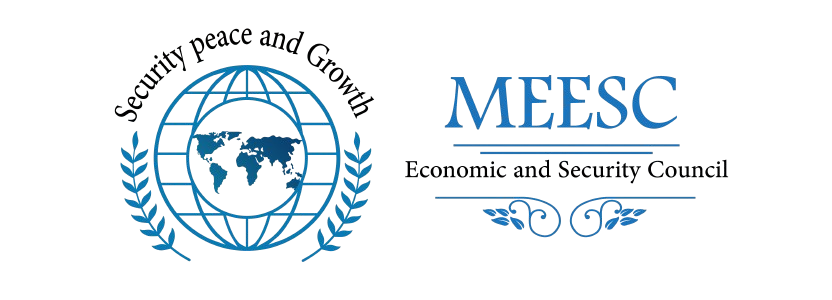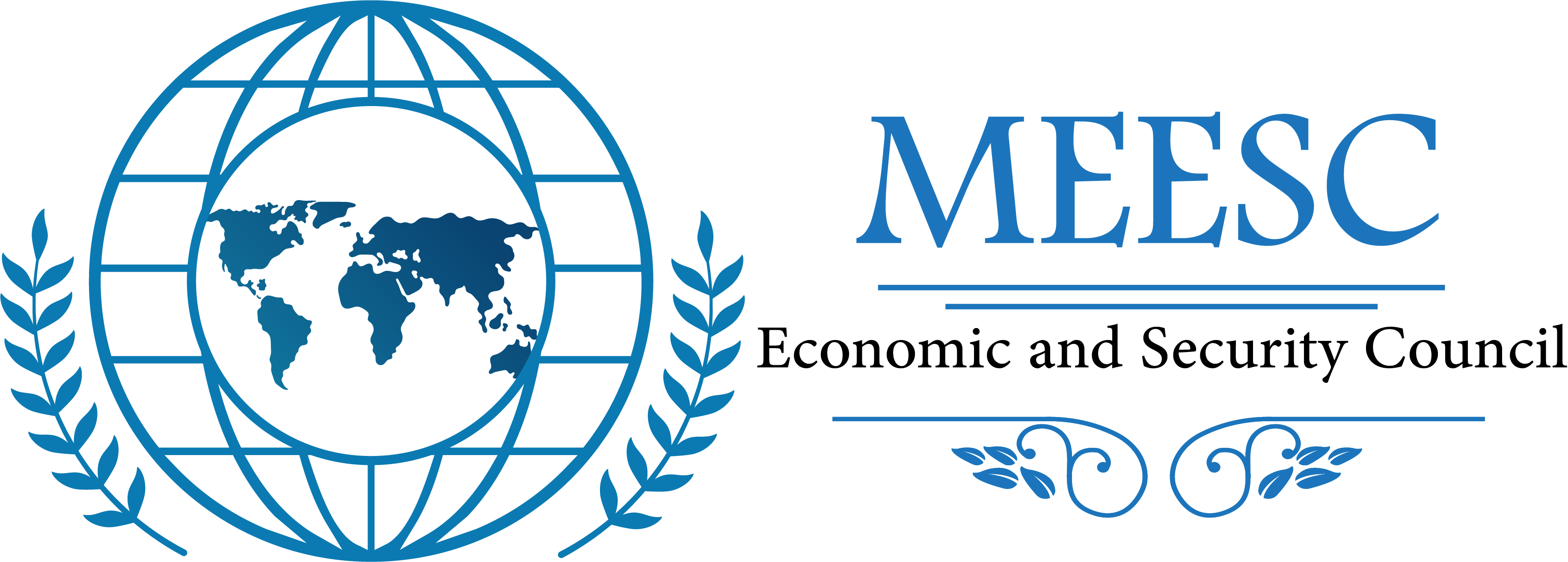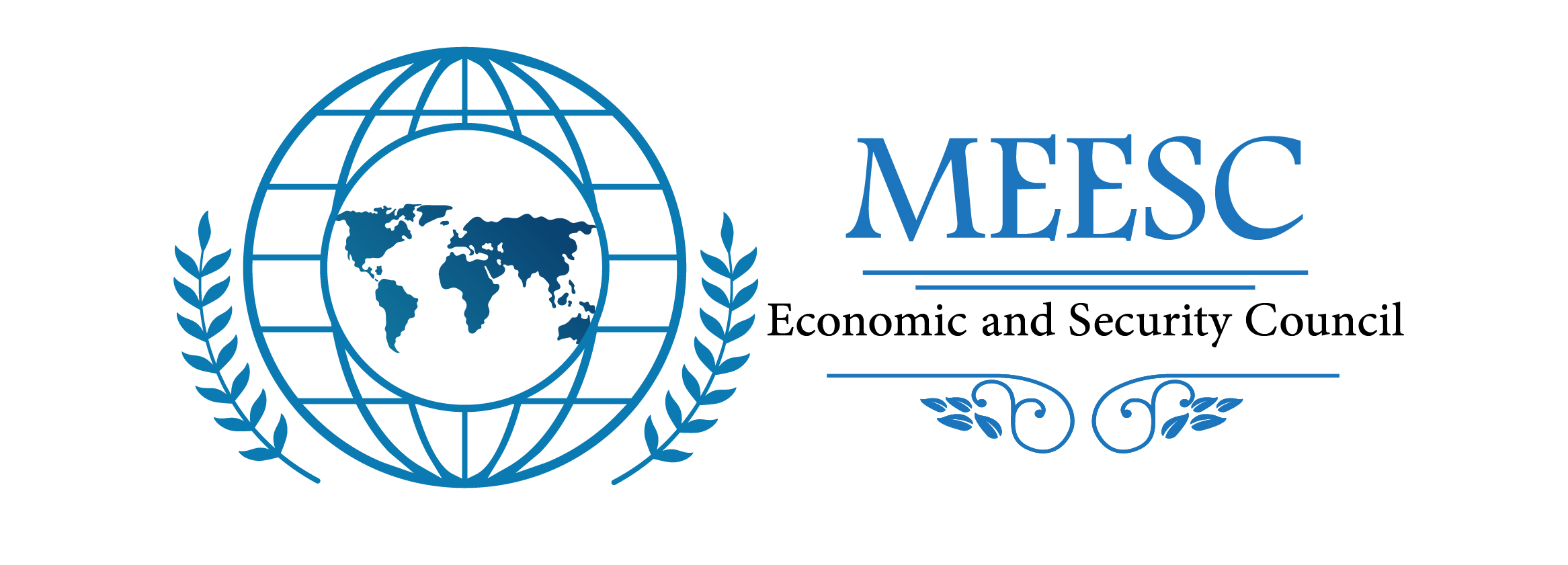
Gaza: International Economic City
Transforming Gaza: A Vision for Relocation and Redevelopment by Middle East Economic and Security Council Leaders (MEESC)
While small in size, the Gaza Strip is of tremendous strategic significance. Its location on the Mediterranean, at the crossroads of Africa, Asia, and Europe, offers immense potential for economic development. However, Gaza faces severe challenges: overpopulation, limited resources, high unemployment, and ongoing political and security tensions. These factors have constrained its potential and burdened its residents with economic hardships.
A bold and unconventional proposal could be for Middle East Economic and Security Council (MEESC) member states to facilitate the voluntary relocation of Gaza’s population to other member states while transforming Gaza into an international economic hub. This plan could alleviate humanitarian challenges, create new economic opportunities for Gaza’s residents, and establish a model for regional cooperation and development.
- The Challenges in Gaza
Gaza’s challenges are complex and deeply rooted:
Overpopulation: With over 2.3 million people living in an area of just 365 square kilometers, Gaza is one of the most densely populated places in the world. This has led to overcrowded housing, strained infrastructure, and limited access to resources.
Resource Scarcity: Chronic shortages of water, electricity, and basic necessities have hindered development and quality of life.
Economic Stagnation: Gaza suffers from one of the highest unemployment rates globally, exceeding 45%, with limited opportunities for its youth.
Political Instability: Ongoing conflicts and blockades have stifled investment and hindered long-term development.
To address these challenges, a dual strategy of voluntary population relocation and redevelopment could offer a sustainable solution.
- Voluntary Relocation of Gaza’s Population
MEESC member states could work together to facilitate the voluntary relocation of Gaza’s population. This would require careful planning, ethical considerations, and robust support systems to ensure the well-being of those involved.
A. Identifying Host Countries
- MEESC member states with ample land, economic resources, and growing industries—such as Saudi Arabia, the UAE, Qatar, and Egypt—could welcome Gaza’s residents.
- These countries could benefit from an influx of skilled and industrious individuals who can contribute to their economies, particularly in sectors such as construction, technology, healthcare, and education.
B. Creating Incentives for Relocation
- Employment Opportunities: Host countries could offer guaranteed jobs in industries experiencing labor shortages, providing immediate economic benefits to relocated individuals.
- Housing and Social Services: MEESC could fund housing projects, healthcare access, and education for relocated families to ensure a smooth transition and integration.
- Financial Support: Relocated individuals could receive financial assistance to help them establish their new lives.
C. Developing New Communities
- MEESC member states could build planned communities specifically for relocated populations. These communities would include modern housing, schools, healthcare facilities, and infrastructure to support a high quality of life.
- Cultural and social programs could help preserve the heritage of Gaza’s people while facilitating integration into their host countries.
- Transforming Gaza into an International Economic City
Once the population density in Gaza is reduced, MEESC could embark on a comprehensive redevelopment plan to turn Gaza into a global economic hub. This initiative would focus on leveraging Gaza’s strategic location and natural resources.
A. Infrastructure Development
- Port and Trade Hub: Develop a world-class port in Gaza, making it a gateway for international trade between the Middle East, Europe, and Africa.
- Transportation Networks: Build modern road, rail, and air transport systems to connect Gaza with regional markets.
- Energy Projects: Invest in renewable energy projects, such as solar and wind farms, to provide sustainable power for Gaza’s economic activities.
B. Special Economic Zone (SEZ)
- Establish Gaza as a Special Economic Zone with tax incentives and relaxed regulations to attract foreign investment.
- Focus on industries such as manufacturing, logistics, technology, and tourism, which can thrive in Gaza’s strategic location.
C. Tourism Development
- Develop Gaza’s Mediterranean coastline into a global tourism destination, featuring resorts, cultural attractions, and recreational facilities.
- Promote Gaza’s historical and cultural heritage to attract international visitors.
D. Technology and Innovation Hub
- With the support of MEESC member states, Gaza could become a hub for technology and innovation. Investments in tech parks and education would position Gaza as a leader in the digital economy.
- Addressing Political and Security Challenges
Transforming Gaza requires a stable and secure environment. MEESC member states would need to work collaboratively to address these challenges:
Regional Diplomacy: Foster dialogue between key stakeholders to create a stable political environment for Gaza’s redevelopment.
Security Cooperation: Ensure the security of infrastructure projects and economic activities through coordinated efforts among MEESC members.
International Support: Seek support from global powers and organizations to ensure the success of the initiative.
- Ethical Considerations and Human Rights
A relocation and redevelopment initiative must be grounded in ethical principles:
Voluntary Participation: Relocation must be entirely voluntary, with no coercion or forced displacement.
Preserving Cultural Identity: Relocated individuals should have access to cultural institutions and programs that preserve their heritage and traditions.
Right of Return: Individuals should have the option to return to Gaza once redevelopment is complete.
- Funding and Collaboration
To finance this ambitious plan, MEESC could:
Create a Regional Development Fund: Pool resources from member states to fund relocation and redevelopment efforts.
Engage the Private Sector: Encourage private investment in Gaza’s transformation by offering incentives and guarantees.
Leverage International Aid: Partner with global organizations such as the UN, World Bank, and IMF to secure additional funding and expertise.
- The Vision for a Transformed Gaza
By reducing population pressures and investing in economic development, Gaza could become:
A Global Trade Hub: With a modern port and logistics infrastructure, Gaza could facilitate regional and international commerce.
A Tourism Destination: Its coastline and cultural heritage could attract millions of visitors annually.
A Center for Innovation: Investments in education and technology could position Gaza as a leader in the digital economy.
A Symbol of Regional Cooperation: Gaza’s transformation could demonstrate the power of collaboration among MEESC member states.
What is a retainer?
The return on investment (ROI) for Middle East Economic and Security Council (MEESC) member states in facilitating the transformation of Gaza into an international economic city and relocating its population would be multi-faceted. While the initiative requires substantial financial, logistical, and political efforts, the benefits to MEESC members could be significant in terms of economic, geopolitical, and social gains. Below is a breakdown of the potential returns:
- Economic Benefits
Access to a Strategic Trade Hub: Developing Gaza as a global economic city would establish a vital trade gateway between Europe, Africa, and Asia. MEESC states could leverage Gaza’s position to enhance regional trade networks and expand export opportunities.
Boosting Regional Economic Growth: By investing in infrastructure, tourism, and industries in Gaza, member states could stimulate economic activity and generate long-term revenue from trade, tourism, and industrial development.
Job Creation for Regional Citizens: Infrastructure development and business activities in Gaza would create jobs not only for relocated residents but also for skilled workers and professionals across MEESC countries.
Foreign Investment Attraction: A transformed Gaza with a stable environment and modern facilities would attract international investors, bringing in additional capital and partnerships to the region. - Geopolitical Benefits
Strengthening Regional Unity: The collaborative effort to redevelop Gaza would enhance cooperation and solidarity among MEESC member states, demonstrating their ability to work together for a shared goal.
Stabilizing the Region: Addressing Gaza’s humanitarian crisis and reducing tensions through economic empowerment and population relief would contribute to broader regional stability, benefiting all member states. Global Influence and Soft Power: Successfully transforming Gaza into an international economic hub would bolster the reputation of MEESC member states as leaders in humanitarian and economic initiatives, enhancing their global influence. - Security Benefits
Reduced Regional Tensions: By addressing Gaza’s overpopulation and economic hardships, the initiative could help de-escalate long-standing tensions and security risks in the region.
Stronger Economic Stability: Economic prosperity in Gaza would reduce incentives for unrest and extremism, creating a safer environment for neighboring countries.
Collaborative Security Frameworks: The process would strengthen security coordination between MEESC states, improving their ability to manage shared threats. - Social and Humanitarian Benefits
Alleviating Humanitarian Pressure: Relocating Gaza’s population to member states with better opportunities would significantly improve living standards for residents, showcasing MEESC’s commitment to human rights and well-being.
Improving Regional Public Opinion: By addressing the needs of Gaza’s population, MEESC states would foster goodwill both within the region and globally, enhancing their credibility and moral standing.
Cultural Integration Opportunities: Relocated Gaza residents could contribute to the cultural diversity of their host countries, enriching societies while maintaining their heritage. - Financial Returns
Revenue from Special Economic Zones (SEZs): Gaza’s transformation into an SEZ could generate significant revenue for MEESC members through tax collection, trade fees, and partnerships with global companies.
Tourism Revenue: Developing Gaza’s Mediterranean coastline and cultural heritage could turn it into a major tourist destination, boosting the regional tourism economy.
Reduced Aid Dependency: A thriving Gaza would reduce the need for international humanitarian aid, allowing MEESC states to reallocate resources to other priorities. - Long-Term Strategic Gains
Building a Model for Regional Development: The success of the Gaza initiative could serve as a blueprint for similar projects in other conflict-affected or underdeveloped areas within the region.
Economic Integration: The initiative would foster greater economic integration among MEESC member states, creating a more interconnected and resilient regional economy.
Promoting Innovation and Technology: Investments in technology and education in Gaza could position the region as a hub for innovation, benefiting all MEESC members.
Conclusion:
The return on investment for MEESC member states in transforming Gaza into an international economic city and addressing its humanitarian challenges is substantial. While the upfront costs may be high, the long-term benefits—ranging from economic growth and geopolitical influence to regional stability and improved living standards—are well worth the effort. This initiative represents not just an opportunity to address an urgent crisis but also a chance to shape a more prosperous and united Middle East.

